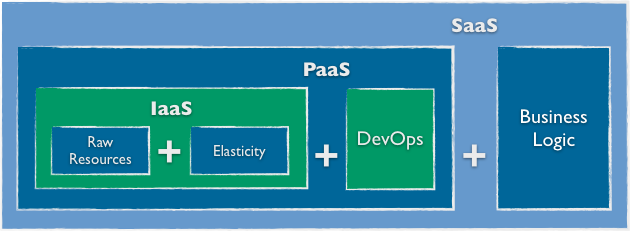There is no doubt. The product is there. The vision, too. At times, they leave some space to arrogance as well but, come on, they are the market leader, aware of being far ahead than anybody else in this field. A field they actually invented themselves. We almost feel like forgiving that arrogance. Don’t we.
The AWS summit 2013 in London has been just one more time the confirmation that the cloud infrastructure market is there, the potential is higher than ever and that Amazon “gets” it, drives it and dominates it quite undisturbed. All the others struggle to distinguish themselves among a huge amount of technology companies, old and new, who are strongly convinced of having jumped into the cloud business but, I’m pretty sure, the majority of their executives thinks that cloud is just the new name for hosting services.
Before going forward, I want to thank Garret Murphy (@garrettmurphy) for having transferred his AWS summit ticket to me, without even knowing who I was, but simply and kindly responding to my tweeted inquiry. I wish him and his Dublin-based startup 247tech.ie the required amount of luck that, coupled with great talent, leads to success.
Now, I won’t go through the whole event, because being this a roadshow which London wasn’t the first edition, much has been said already here and here. The general perception I had is that AWS is still focusing on presenting the advantages of cloud-based as opposed to on-premises IT infrastructures, showing off the rich toolset they have put in place and eventually bringing MANY (I counted nearly 20 ones) customers testifying how they are effectively using the AWS cloud and what advantages they got doing that. Ok, most of them were the usual hyper-scale Internet companies but I’ve seen the effort to bring enterprise testimonials like ATOC (The Association of Train Operating Companies of the UK). However, they all said to be using AWS only for web facing applications, staging environment or big data analytics. Usual stuff which we know to be cloud friendly.
What really impressed me was the OpsWorks demo. OpsWorks was released not long ago as the nth complementary Amazon Web Service to help operating resilient self-healing applications in the cloud. Aside from the confusion around what-to-use-when, given the large number of tools available (and without considering those from third parties which are growing uncontrolled day by day), there is one evident trend arising from that.
For those who don’t know OpsWorks, it is an API-driven layer built on top of Chef in order to automate the setup, deployment and un-deployment of application stacks. An attempt to the DevOps automation. How this is going to meet customers’ actual requirements while still keeping simplicity (a.k.a. without having to provide a too large number of options) is not clear yet.
During the session demonstrating OpsWorks, the AWS solution architect remarked that no custom AMIs (Amazon Machine Images) are available for selection while creating an application stacks. Someone in the audience immediately complained on Twitter about this, probably because he wasn’t happy about having to re-build all his customizations through Chef recipes on top of lightweight basic OS images, discarding them from his custom VM image.
In fact there are several advantages of moving the actual machine setup to the post-boostrap automation layer. For example, the ease of upgrading software versions (e.g. Apache, MySQL) simply by changing a line in a configuration file instead of having to rebuild the whole operating system image. But mostly because, keeping OS images adherent to the clean vendor releases, you probably will find them available in other cloud providers, making your application setup completely cross-cloud. Of course there are disadvantages too, including the delay added by operations like software download or configuration that may be necessary each time you decide to scale-up your application.
Cross-cloud application deployment. No vendor lock-in. Cool. There is actually a Spanish startup called Besol that is building its entire (amazing) product “Tapp into the Cloud” on the management of cross-cloud application stacks, leveraging a rich library of Chef cookbook templates. And while I was writing this post on a flight from London, Jason Hoffman (@jasonh) was being interviewed by GigaOM and, while announcing a better integration between Joyent and Chef, he mentioned the compatibility between cloud environments as a major advantage of using Chef.
What we’re observing is a major shift from leveraging operating system images towards the adoption of automation layers that can quickly prepare for you whatever application you want your virtual server to host. That means that one of the major advantages introduced by virtualization technology, that is the software manipulation of OS images, one of the triggers of the rise of cloud computing, no longer matters.
Potentially, with the adoption of automation platforms like Chef, Puppet or CFEngine, service providers could build a complete cloud infrastructure service, without employing any kind of hypervisor. And this trend is further confirmed by facts like:
- The recent version of OpenStack (Grizzly) reported as a major new feature the possibility to provision bare-metal machines;
- The release of Ubuntu MaaS (Metal-as-a-Service) which claims to speak the language of the cloud to physical servers.
Of course there are still advantages for using a hypervisor, because certain applications require architectures made of many micro-instances for performing parallel computing, thus it’s still necessary to slice a server into many small portions. However, with the silicon processors increasing the number of cores and the ability of using threads, virtualization may not be so important anymore for the cloud.
In the end, I think we no longer can say that virtualization is the foundation of cloud computing. The correct statement could perhaps be that virtualization inspired cloud computing. But the future may leave even a smaller space for that.




